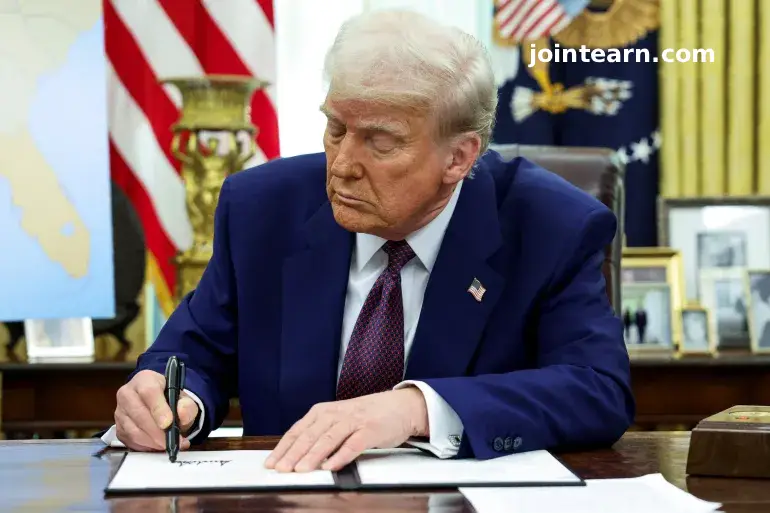
Over the weekend, US President Donald Trump announced a bold proposal to distribute $2,000 to every American using revenue collected from his administration’s expansive tariff policies. Trump claimed that the United States has already amassed “trillions of dollars” in tariff revenue, which could be used both to pay down the federal debt and provide direct payments to citizens.
The Proposal: What Trump Promises
Trump outlined the plan on Truth Social, stating:
“People that are against Tariffs are FOOLS! We are taking in Trillions of Dollars and will soon begin paying down our ENORMOUS DEBT, $37 Trillion… A dividend of at least $2,000 a person (not including high income people!) will be paid to everyone.”
According to Trump, the dividend would target low- and middle-income Americans, excluding “high-income people,” though he did not define specific income thresholds or clarify whether children would qualify.
Treasury Secretary Scott Bessent later suggested that the payments could take multiple forms, including tax deductions, reduced Social Security taxes, or other mechanisms, rather than direct checks.
Legal and Practical Challenges
Experts have raised questions about whether Trump’s plan is legally and financially feasible:
- The Supreme Court is reviewing the legality of Trump’s tariff authority under the International Emergency Economic Powers Act. If the court rules against him, future tariff revenue could be significantly reduced.
- The administration has already committed tariff revenue to other priorities, including paying down the federal debt and funding existing tax cuts.
- A $2,000 dividend for roughly 150 million adults earning under $100,000 could cost $300 billion, exceeding the tariff revenue collected so far this year. If children are included, the cost could rise to $600 billion, according to analysts at the Committee for a Responsible Federal Budget.
How Tariffs Affect Americans
While Trump touts tariffs as a revenue source, economists warn that they already impose costs on households. Independent estimates suggest tariffs are costing Americans $1,600 to $2,600 per household annually, which roughly offsets the proposed $2,000 dividend.
Joseph Rosenberg, senior fellow at the Urban Institute-Brookings Institution Tax Policy Centre, noted that Congressional approval would be required to distribute such payments, and legislators have historically been reluctant to implement tariff rebates.
Revenue vs. Cost
Through October 2025, US tariff collections totaled $309.2 billion, compared to $165.4 billion in the same period of 2024. Analysts project tariff revenue may rise above $200 billion annually if current tariffs remain, but this is insufficient to fund a $2,000 per-person payout without reallocating other federal funds.
Experts suggest that using tariffs to provide a direct dividend is less efficient than reducing or removing tariffs, which would lower costs for consumers while avoiding complex distribution challenges.
Historical Context
Trump’s administration has long emphasized tariffs as a key economic strategy, especially on steel, cars, and pharmaceutical imports. The president has repeatedly stated that tariff revenue could help reduce the national debt, a claim analysts have questioned as overly optimistic.
Previous efforts to provide a tariff rebate have failed in Congress. For example, Senator Josh Hawley introduced legislation in 2025 to provide $600 per person, but the bill never advanced.
Conclusion
While Trump’s $2,000 tariff dividend is politically attention-grabbing, experts remain skeptical about its feasibility. Legal hurdles, funding shortfalls, and existing tariff costs make the plan unlikely to be realized in its current form. Economists suggest that removing tariffs altogether might be a more practical approach to delivering economic relief to American households.


Leave a Reply